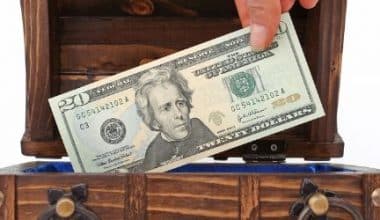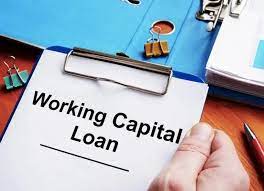If you’re running low on cash and you’re looking for resources to get through an emergency, you can resort to a hardship withdrawal. It allows you to take money from your account without having to pay the usual 10% early withdrawal penalty. Like any other form of loan, a 401(k) hardship withdrawal has rules governing it, and we’ll be treating them in this article.
What Is Hardship Withdrawal?
A 401(k) hardship withdrawal, according to IRS rules, allows you to take money from your account without paying the standard 10% early withdrawal penalty for anyone under the age of 59.5. A hardship withdrawal from a 401(k) is not the same as a 401(k) loan. There are several distinctions, the most noteworthy of which is that hardship withdrawals typically do not allow money to be refunded back into the account. However, you will be able to continue donating to the account.
Read Also HOW TO CHECK 401K BALANCE: Simple Guide
401(K) Hardship Withdrawal
Many employees rely on their 401(k)s for the majority of their retirement funds. As a result, if you need to make a large purchase or are having difficulty keeping up with your bills, these employer-sponsored plans should not be your first stop.
However, if all other choices have been explored, such as an emergency fund or outside investments, a 401(k) hardship withdrawal may be worth considering.
How Does it Work?
A hardship withdrawal is an emergency withdrawal of funds from a retirement plan requested in response to “an immediate and heavy financial necessity,” as defined by the IRS. It is actually up to the individual plan administrator whether such withdrawals are permitted or not.
Many major firms do this, though not all, if employees meet certain criteria and give evidence of their hardship.
Justifications for a 401(k) Hardship Withdrawal
The six criteria for a hardship withdrawal remained unchanged under the new statute. Financial hardship withdrawals are permitted due to the following:
- Medical treatment or medical expenses
- Purchasing a primary residence
- Education after high school
- Preventing the foreclosure or eviction of a primary residence
- Funeral or burial costs
- Repairs to a principal residence caused by a casualty loss that would have been tax-deductible under Internal Revenue Code Section 165
The Tax Cuts and Jobs Act (TCJA) stipulates that such losses are not tax-deductible from 2018 to 2025, except in defined federal disaster zones.
Do You Have to Repay a 401(k) Hardship Withdrawal?
Qualified hardship withdrawals from a 401(k) are not subject to repayment. You must, however, pay any delayed taxes on the amount of the withdrawal. You may also face an early withdrawal penalty if your hardship withdrawal is not qualified or if you withdraw more than is required to cover the specific hardship.
What Evidence Do You Require?
As confirmation of your hardship withdrawal, you must offer acceptable paperwork. This can contain invoices from a funeral home or university, insurance or hospital bills, bank statements, and escrow payments, depending on the circumstances. These are required for tax purposes. However, you are not normally required to reveal them to your employer or plan sponsor.
How Long Will It Take for the Funds to Arrive?
A hardship withdrawal typically takes seven to 10 business days, including the time it takes to review your withdrawal application.
A retirement plan can often only distribute benefits when specified conditions occur. When a distribution may be made, it should be explicitly stated in your summary plan description. The summary description and plan document must also state whether the plan allows hardship distributions, early withdrawals, or loans from your plan account.
401(k) Hardship Withdrawal Rules
One of the rules of 401(k) hardship withdrawal indicates that before making a withdrawal, you should check to see if your individual plan allows for 401(k) hardship withdrawals. Not all plans allow for hardship withdrawals. Whether or not to accept hardship withdrawals is up to the plan sponsor. If your account provider does allow you to withdraw funds, you must demonstrate that you do not have alternative available funds to cover the expenses.
It is not necessary for a qualified financial necessity to be unexpected. Even if the expense was foreseen or intentionally pursued, it might be regarded as sudden and significant. However, there are many expenditures that will not be decided to be immediate and severe. A consumer purchase is unlikely to be considered a qualifying factor for a hardship payout.
Read Also: SELF DIRECTED 401K: All You Need To Know
401(k) Hardship Withdrawal Limits
If you pass the rules for a 401(k) hardship withdrawal, the next step is to figure out how much you can withdraw. In most circumstances, you will be permitted to withdraw only what you require. For example, if it will cost $10,000 to repair your house after an earthquake, you will not be able to borrow more than that amount. You may be permitted to accept additional monies to help meet connected charges, such as transaction taxes.
If you take a hardship withdrawal, the funds will be subject to income tax, and you may be liable for a 10% early withdrawal penalty if you are under the age of 59 1/2. In 2020, the CARES Act permitted withdrawals of up to $100,000 for COVID-related expenses with no 10% early withdrawal penalty. The CARES Act also allowed for tax payments to be made over a three-year period. If you withdraw cash for COVID-related expenses in 2020, “the income and tax can be recognized over three years, permitting the spread of income and tax over a longer period of time,” according to Steven Weil, president and tax manager of RMS Accounting in Fort Lauderdale, Florida.
Documentation for 401(k) Hardship Withdrawal
You must speak with your plan sponsor in order to get the cash. This may be a human resources person at your business or a financial advisor allocated to the plan. Generally, this is where the employee can learn about the employer’s specific requirements and acquire the documentation needed. In general, the paperwork required to apply for a withdrawal will be done on paper or online.
The Effects of a 401(k) Hardship Withdrawal
Funds removed from a 401(k) for hardship may not be restored in some situations. When you spend your retirement money, you forfeit the amount saved as well as any additional interest that could have accrued in the retirement account. “Every dollar taken out of your 401(k) early is a dollar that won’t be there for retirement,” Ryan adds. “You also lose the ability for this money to grow tax-deferred over time, which might possibly expand your nest egg even more.”
Using cash to help purchase a property where you will live may have the least negative impact among the reasons for taking a hardship withdrawal. “A home, like an investment, appreciates with time,” says Ben Barzideh, a wealth advisor at Piershale Financial Group in Barrington, Illinois. “Owning a home also has emotional and psychological benefits.”
If you made a COVID-related withdrawal in 2020, you might get a refund for all or part of the sum within three years. The money you get, however, is considered income and may affect your eligibility for government programs. “The income recognized could influence the amount of any Obamacare credit and perhaps make a portion of the credit repayable,” Weil explains. “It could also influence the amount of Social Security that is taxable.”
Taxes on a 401(k) Hardship Withdrawal
You will be taxed on the amount you withdraw as a hardship withdrawal. In addition to standard income taxes, you will most likely have to pay a 10% penalty. If you meet one of the following exceptions, you may be eligible to avoid the 10% penalty:
- Being completely crippled
- More than 7.5 percent of adjusted gross income in medical debt
- A divorce court ordered the money to be given to a former spouse.
- Leaving the company for any reason during your 55th year (or later)
- Leaving the company after planning a phased withdrawal over the course of your life expectancy
What if you don’t qualify for a penalty exemption? In such a situation, you should budget for at least $0.30 of every $1 you withdraw to go toward taxes. If you withdraw $1,000, for example, you may only receive $700 after taxes.
Do you have any additional resources, such as an emergency fund, that you could utilize to satisfy your needs? If this is the case, it is recommended to use those assets first. Use a 401(k) hardship withdrawal only as a last resort.
Prior to Pursuing a Hardship Withdrawal
Many people are unaware that 401(k) funds are secured from creditors and from bankruptcy. If you are experiencing financial difficulties and believe you may need to file for bankruptcy, do not cash out your 401(k) plan. Your 401(k) plan funds cannot be taken by creditors.
Borrowing money may be preferable to taking a 401(k) hardship withdrawal. Too many people cash out or take a hardship withdrawal from their 401(k) plan to pay for medical expenditures when their 401(k) money would be safeguarded. Before you tap your 401(k), try to work out a payment plan.
Following a 401(k) Hardship Withdrawal
Previously, you could not contribute to your 401(k) plan for six months after taking a 401(k) hardship withdrawal. The six-month hiatus is no longer in effect as of January 1, 2020. You cannot repay the hardship withdrawal amount, but you may continue to contribute up to the maximum 401(k) permissible contribution limit for the year.
Can You Take an IRA Hardship Withdrawal?
The IRS does not permit hardship withdrawals from IRAs, at least not in this form. You can withdraw money from an IRA at any time, but there is a 10% penalty if you are under the age of 59 1/2. This rule does have an exception: You can withdraw funds from your IRA to pay for certain educational expenditures or to purchase your first home.
How Much Can I Borrow in 2023 With a 401(k) Hardship Withdrawal?
Plans that allow for early distribution in 2023 allow you to borrow only what is required to cover the stated expense. Under normal conditions, you can withdraw up to 50% of your amount, or $50,000. If you had taken out a CARES Act loan, you could have borrowed up to 100% of your debt, or $100,000. This limit applies to all tax-advantaged retirement savings vehicles, such as IRAs, 403(b)s, and other 401(k)s.
Alternatives to 401(k) hardship Withdrawal scheduled for 2023
The sun has already set on early COVID-related tax relief, but you may want to examine other options, such as:
- Reducing day-to-day living expenses
- Transferring costs to a credit card with no interest
- Using emergency funds, a brokerage account, or both
- Obtaining a 401(k) Loan
Do you have to Prove Hardship Withdrawal?
You are not required to demonstrate hardship in order to withdraw from your 401(k) (k). In other words, you are not required to provide your employer with proof of your hardship. You should keep any documentation or bills proving the hardship.
Does Employer have to Approve Hardship Withdrawal?
It’s similar to a 401(k) from your company, and it’s called the hardship distribution (which is generally acquired post-retirement). The Internal Revenue Service states that employees can only access this money before they turn 59.5 in the event of an emergency, and the plan administrator must give their consent.
Are Hardship Withdrawals Hard to get?
You can’t compare a hardship withdrawal to a plan loan. The withdrawal could be difficult to obtain and expensive to pay for. Keep in mind that the primary purpose of your 401(k) is to provide financial security in your golden years. Before then, it should only be used as a last resort to cover absolutely necessary costs.
Can I take a Hardship Withdrawal to Pay Rent?
A 401(k) plan may also permit early withdrawals from savings in the event of a hardship, though this is not always the case. To avoid foreclosure, you can take money out of your 401(k), but you can’t take money out to put down a security deposit on an apartment.
What happens if you Lie about a Hardship Withdrawal?
On the basis of these actions, the defendant is charged with wire fraud, false statements, and concealment of material facts in a legal proceeding.
How much Taxes do I have to Pay on a Hardship Withdrawal?
Any previously untaxed funds received as a hardship distribution are subject to income tax. You may also be required to pay an additional 10 percent tax unless you are at least 59 and a half years old or qualify under another exception. After receiving a hardship distribution, you may be unable to contribute to your account for up to six months.
How do you avoid a hardship withdrawal penalty?
If a person takes out a hardship withdrawal to cover medical expenses, he or she can avoid the 10% penalty if the unreimbursed qualified medical expenses do not exceed 10% of their adjusted gross income.
In Conclusion,
Avoid hardship withdrawals if you can. A hardship is simply what it is – a hardship. It will not be something you anticipated. Often, it will be an emergency or a grave circumstance, and you may have exhausted all other options, but if any remain, exhaust those first.
FAQs on Hardship Withdrawal
Do you get penalized for taking a hardship withdrawal?
You will be taxed on the amount you withdraw as a hardship withdrawal. In addition to standard income taxes, you will most likely have to pay a 10% penalty.
What proof do you need for a hardship withdrawal?
Financial information or evidence proving the employee’s immediate and severe financial necessity. Insurance bills, escrow papers, burial expenditures, bank statements, and other documents may be included.
How much can you withdraw for hardship?
In 2020, the CARES Act permitted withdrawals of up to $100,000 for COVID-related expenses with no early withdrawal penalty of 10%. The CARES Act also allowed for tax payments to be made over a three-year period.






